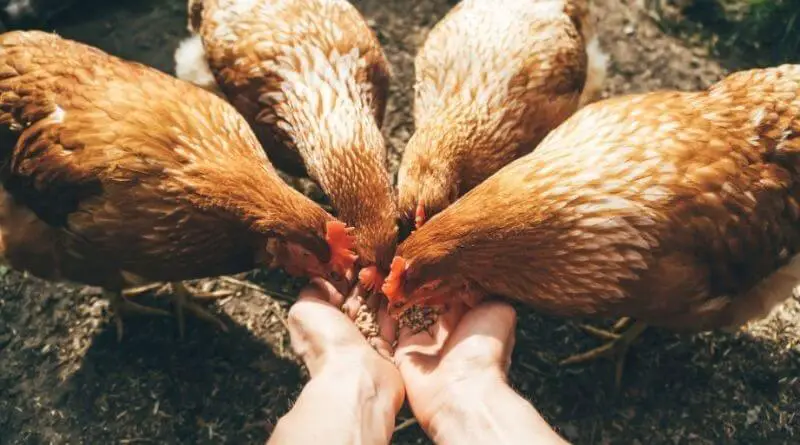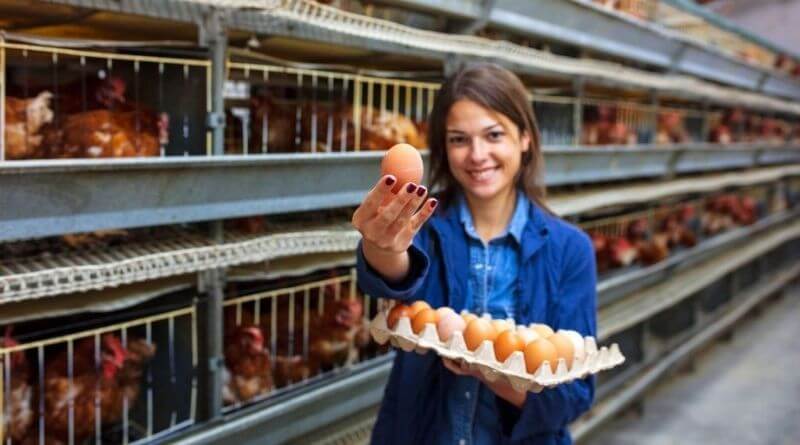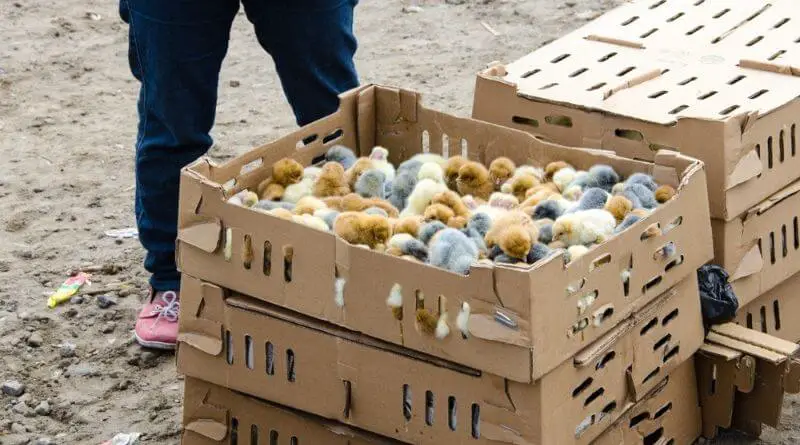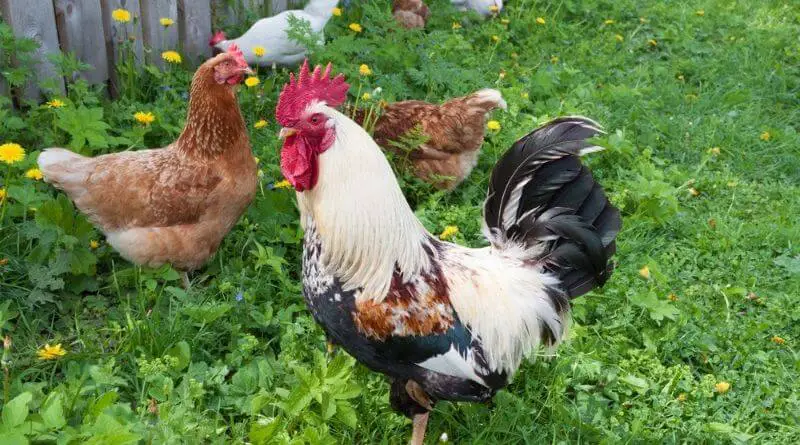Are you willing to fill your pockets with heavy bucks? That’s easy if you do it by expanding your flock of chickens. Or are you considering having a flock of healthy birds? Whatever your cause is, breeding chickens in the right way can help you make a sustainable flock and some happy-profit as well.
If this is what’s in your mind, then what are you waiting for? You probably don’t know how to breed chickens that’ll benefit both you and your chicken. Although the rooster plays the most important role here, there are a few things you need to consider if you want to reach the target.
To make sure the process goes nice and smooth, we are here with a guide that tells you all you need to know about chicken breeding. So, if you have already chosen the breeding flock, we can get to work!
How To Breed Chickens – A Step By Step Guide

The pre-requisite of breeding chickens is the chicken and rooster mating. That’s what everyone knows, so do you, and me. But what we
01. Selective breeding:
When you choose the stock, you have some factors in mind. You may simply want to increase a certain breed, breed the healthy ones, or cross between your favorite birds. But if you don’t have a plan in mind or wondering “how do you breed chickens?”, let me share mine with you!
With lots of hens in the flock, try dividing them into two families or groups. And how would you do this? Divide the groups based on the phenotype, that is, their visible characteristics. For instance, you have two categories of hens based on their phenotype- normal feathered and frizzle feathered. Now, that’s how you will make your groups.
Now, all you need is a rooster. Can you just pick any rooster? Nope! Take a healthy rooster that is not related to the stock of hens. This way you can be sure that the breeding chickens will have good health.
You cannot put a rooster to mate with all the hens of the family. You need to pick hens that have standard weight and are perfectly healthy. For instance, if you have about 5 hens in the family, you’ll probably come down to the best two for breeding. For the rest of the hens, they must be put away from the breeding pens!
Keep in mind that you only use one family for hens breeding every year. If you’ve chosen the normal-feathered hens for the year, then you’ll use frizzle feathered for next year. You may use the original rooster for the breeding process, pick another one with standard health and weight, or even pick a cockerel from the normal feathered stock.
You can also take the help of line breeding chickens process to keep the pure breeds. The selective breeding process also includes yearly culling. In this way, you can keep a flock of healthy, and flawless birds just as you want.
Refrain from breeding birds that are sick or have poor features. When your target is to enhance the flock of birds with specific features, then pick the specimens that have the desired prominent features.
02. The right time!
Your hens will breed any time of the year, but there’s always a right time for everything. And for the breeding cause, spring is the best time. During spring, your hens will likely stay more productive and produce more fertile eggs. If you are planning to carry out the breeding process in winter, you should know that your flock will rather keep themselves warm than mate during winter.
03. Maintaining the correct ratio:
“How about we keep two roosters in one stock of hens for quicker breeding?” No! It will probably lead to a bloodbath because of the competition between the two roosters. However, if you have trained rooster in case of coexisting then having more roosters will offer a higher fertility rate.
The rooster to hen ratio can be 1:4 or 1:5. If you are using two roosters at a time, then remember to double the hen number as well.
04. Rooster-chicken mating:
So, your breeding flock is ready. Make sure you have kept the breeding hens and rooster separately from other birds. Now, let the rooster do its job. The gentleman will entice the ladies and ultimately mate with them.
There may be issues that will resist the rooster mating session. For instance, your rooster might be injured, tired, or overweight to mount the hens. If you want to be sure if everything’s okay, don’t forget to check on your rooster from time to time.
05. Patience!
If you don’t know the hens’ reproductive cycle, read carefully! If you present a rooster to the hens today, you’ll have to wait at least 2 weeks for fertile eggs from the mating. It is quite possible that for the next few weeks, the hen will lay fertilized eggs but they won’t be from your targeted rooster; it will be the result from mating with previous roosters she was kept.
06. Check the rooster’s behavior:
In some cases, the rooster may be an overeager one. He will show aggressive behavior and even harm your hens. It is quite usual for the mating process to be a bit aggressive than calm. But if your hens are injured or stressed due to the rooster’s behavior, that’s when you need to be concerned.
If aggression is the case, pause the breeding process right away and try with a different rooster.
07. Check for fertilized eggs
Well, as I said you got to wait at least 2 weeks for fertilized eggs. After two weeks, when you are trying to make poached eggs and crack the eggs, you will see a white blob in them. And after a few more days, you’ll see red blobs in it. These blobs indicate that your eggs are ready to turn into chickens!
08. Storing and setting eggs:
Now it’s time to store your eggs and set the finest environment for them to hatch. Consider the certain factors for accomplishing your desired objectives.
- It’s wise to put your eggs in the incubator immediately after you notice the fertilization.
- You need to make some effort to ensure all the eggs are developing at the same time.you may harm the whole hatching process if you open the incubator frequently.
Do you have to follow specific rules to store the eggs? Well, yes! you can set the incubator temperature at 60 degrees for one week. Place the eggs upside down, that is pointy end down. This should lead to a nice hatching rate with healthy chicks! You need to be careful about the storage period because a longer time will eventually drop the rate.
Quick Tips For Breeding Chickens
- Above all, during the breeding process, make sure the hens are safe and so are the chickens.
- You need to take the help of the culling process to eliminate birds with traits you don’t want and emphasize the ones.
- According to experts, you should never breed birds that have the same undesired traits or flaws. Again, you should refrain from breeding birds with opposite traits.
- It’s better not to breed birds that have a recent history of sickness. Also, do not indulge in over medication of your breeding chickens.
- Follow the 10 percent rule. If you have 100 chickens, only ten are capable of healthy breeding resulting in healthy chicks.
What to Feed Your Breeder Chickens

Before you know what to feed them, let me clear the concept of breeder chickens. Breeder chickens are the ones that are going to produce the fertilized eggs. Since you are trying to improve the fertility rate among the hens, the diet must be picked more cautiously. You may feed the chickens following the guidelines given-
- If you know about layer feeds, they contain about 16% protein and high calcium. Breeder feed is almost the same; you only need to add a bit more protein and vitamins.
- It is suggested to feed them the 18% layer feed that’ll result in better development of chicks and hatching.
- You can also upgrade the protein content of the feed by adding oyster shells to it.
What to Feed Your Broody Hens
Feeding a broody hen won’t be that easy. She may not even leave the nest at all for a few days.Even if she goes out, it will be solely a maximum 10-15 minutes for eating the food or pooping. Hence, keep the following things in consideration
- It’s okay if your broody hen isn’t eating much.
- You may try taking her from the nest and placing her close to the feeder gently to encourage her.
- You may want to give her high protein food as she won’t be eating much. For instance, an 18 to 20% chick starter would be just fine.
- A high-carbohydrate scratch grain at the food station would be helpful
- Make sure she has access to clean water 24/7.
For both breeder chickens and broody hens, you can use some Vitamin A and D supplements, some fresh greens, and adequate whole grains to feed them for improved health.
Why People Breed Chickens
Selective breeding of chickens can be an excellent way to create your flock and keep the pure breeds intact. There are a couple of reasons why you can choose this path for homestead income or other purposes like people do. Have a look.
Breeding Chickens for Egg Production:

If you want to earn some money through your backyard chicken farms, then selling eggs can be a good way to do that. Without breeding, you may have to buy new pullets every three years minimum for better egg production. However, If you don’t want that, the best way to raise your egg quality and quantity would be breeding. As the hens produce lesser and lesser eggs with aging, you may want to try crossbreeding in your flock.
Some good layers in the flock will make good breeder chickens. Pure breed birds won’t be a good option here as their egg-laying capability is hindered by breeding.
Breeding chickens for meat:

If your sole concern is chicken meat, then you should probably go for broiler chickens. They provide you with increased high-quality meat to suffice your needs.
For getting some good meat at hand, you should know a few factors like – butchering age, culling time, feed-to-gain ratio, and so on.
You can use the culling method to cut out the smaller, underweight chickens and only keep the healthy ones in the flock. You may breed the healthy ones with desired traits of good quality meat to make sure the chicks are meaty and healthy as well.
Breeding chickens for sale:

When you look at the commercial or monetary side of chicken reproduction and ultimately selling, there are a few ways to earn profits. Such as-
- Selling the hatched chicks immediately after hatching
- Selling the older birds with good health
- Selling fertilized eggs that people can use to hatch chicks all by themselves.
If you ask me, among the three options selling chicks or adult birds is the easiest. People are crazy when it comes to buying healthy chicks either for expanding their flock or just for fun! You can sell a chick for even $10 each and adult chickens for as high as $50 each. That’s some good profit right there folks!
Breeding chickens for egg color:

Many people love the idea of creating interesting hybrids and having a basket full of colorful eggs. If you are one of them, you can cross-breed several purebred chickens for creating hybrids that will lay you some great eggs with different colors.
There are different color options you have here, like- dark brown egg layers, easter eggers, blue egg layers, green egg layers, and so on.
Benefits of Breeding Chickens
The most common reason for breeding chickens is because people want to avoid the purchase of pullets every few years for good egg production. There are quite many benefits of breeding chickens by yourselves. Let’s see-
- You can breed chickens for better production of eggs and keeping the egg quality on-point.
- If you create interesting and newer breeds, you can even pull out a show competition of beautiful chickens as a backyard farmer.
- With selective breeding of chickens, you won’t have to worry about your flock being malnourished or even perishing.
- You can earn good bucks by selling healthy chickens at a higher price. You may even love tasting the high-quality meat yourself!
- Who doesn’t love a basket of Easter chicken eggs with different colors? If you do so you can create your hybrids and hence egg colors. You may even sell them for higher profits.
FAQs:
01. Is it hard to breed chickens?
Breeding chickens isn’t some rocket science. In most cases, the rooster does the work eagerly without any effort from you. All you need to do is follow our chicken breeding guide and trust the process.
02. How much money can I make breeding chickens?
If you are selling adult birds or chicks, you can make about $50 and $15 per bird. You can also sell fertilized eggs that’ll add to your profit.
03. How long does it take for chickens to breed?
It can take about 10 to 14 days from mating to producing fertilized eggs for breeding chicks.
04. How do I know if a chicken egg is fertilized?
After about two weeks of introducing a rooster to your hens, you can check for fertilized eggs. Once you break open them, you’ll see a white or red blob in them that indicates they are ready to go into the incubator.
05. Why do roosters die after mating?
Rooster can keep on the mating action for as long as 14 hours. This mating frenzy increases the stress level that drops down the immunity and ultimately causes death.
06. How many eggs does a hen lay before she sits on them?
Once the hen lays eggs, she’ll keep storing them in the nest. Until the number reaches from seven to a maximum of 20, she will keep laying and storing eggs. When the nest is full, she’ll sit on the eggs.
07. How many fertile eggs can a hen lay after mating?
If you have a prolific hen that lays one egg each day then a single mating can produce about a dozen to 14 eggs.
Conclusion
If you were worried a few minutes back about how to breed chickens without messing things up, then by now I’m sure you are a confident backyard farmer.
The hack to breeding chickens and achieving your targeted goals relies on how suitable the environment is for breeding. And this is surely up to you. Although it’s not much of a tough job, it isn’t as easy as to breed chickens in Minecraft either. Starting the process from selecting breeding pens to incubating eggs and finally hatching eggs is one big program that needs patience and determination. But I’m sure you can do it! So, who’s up for some good profit? Get your breeding chickens ready!





